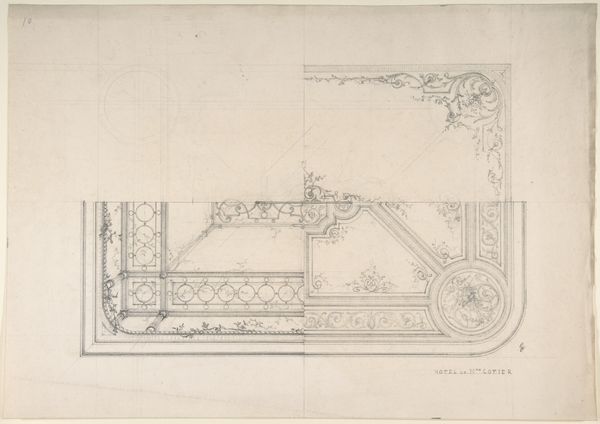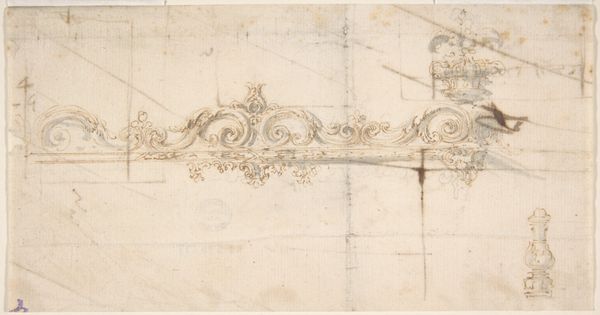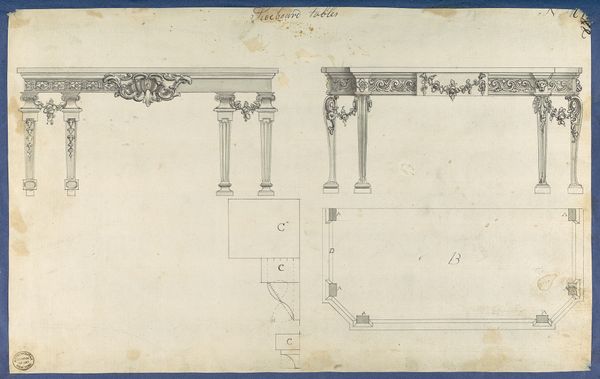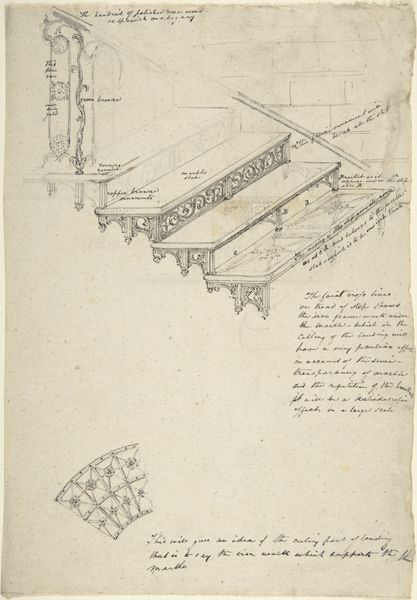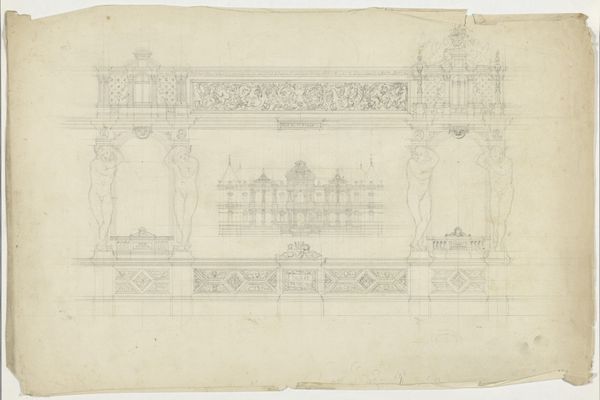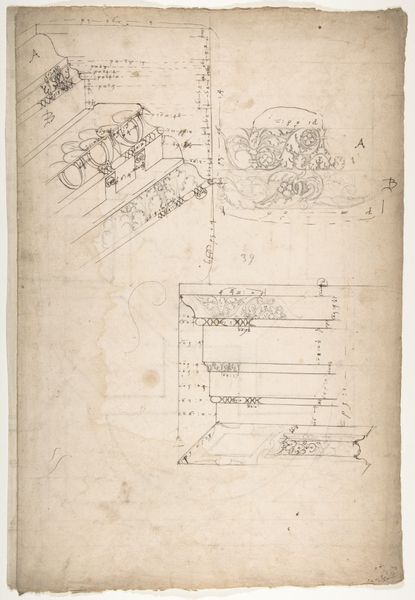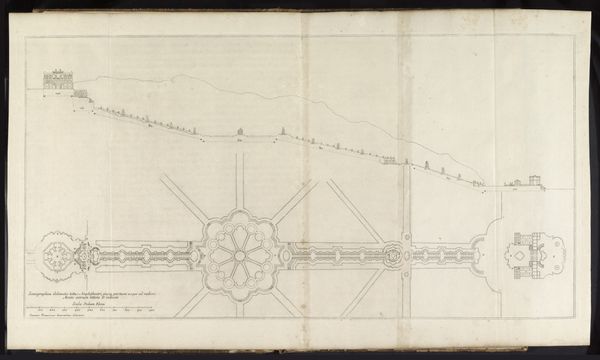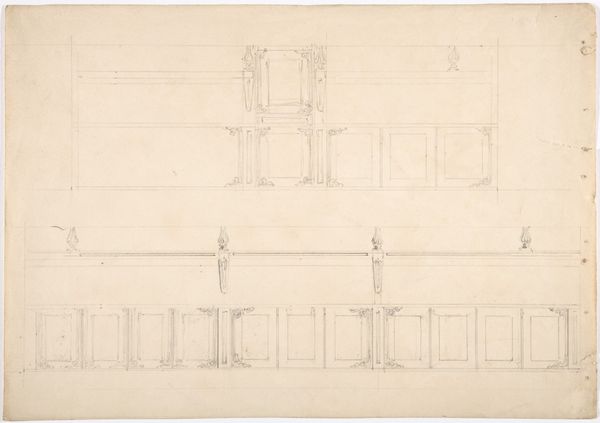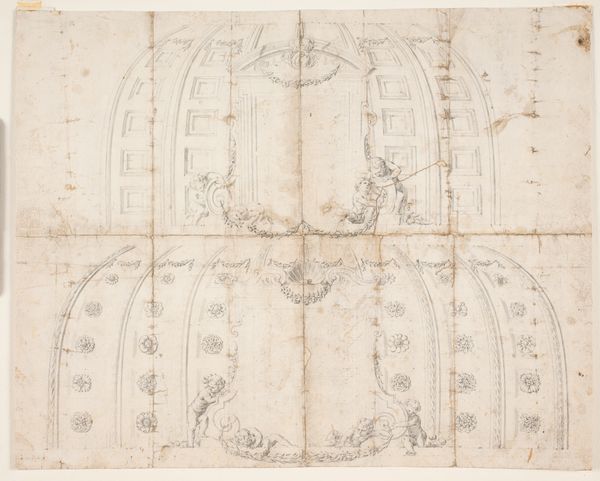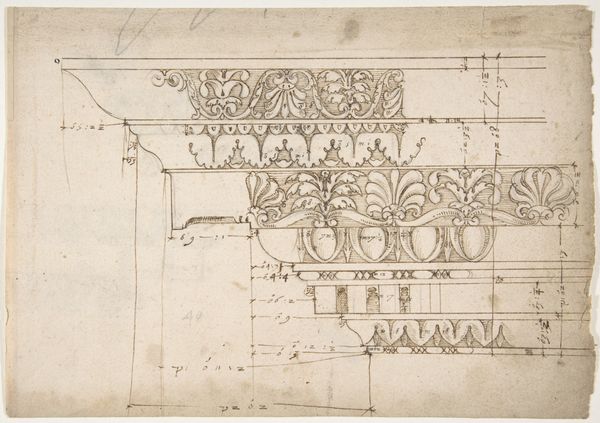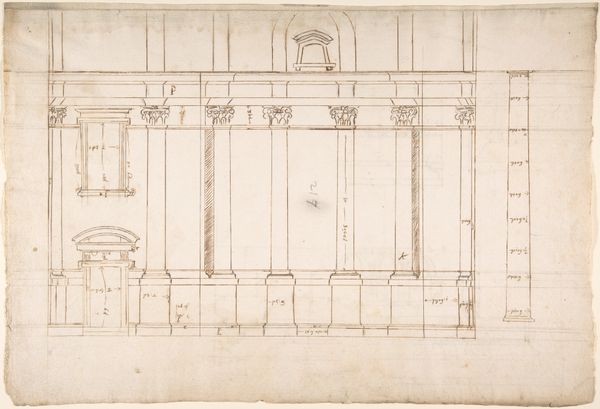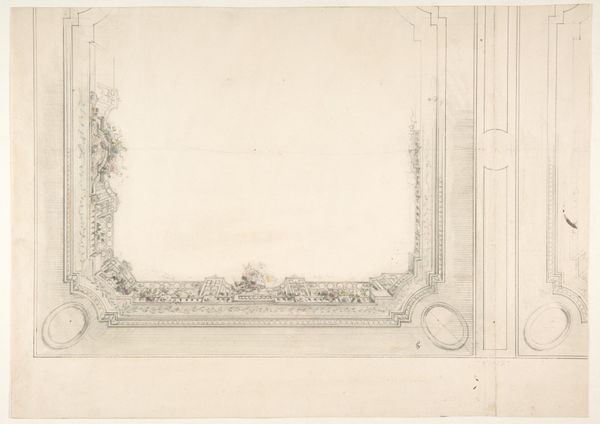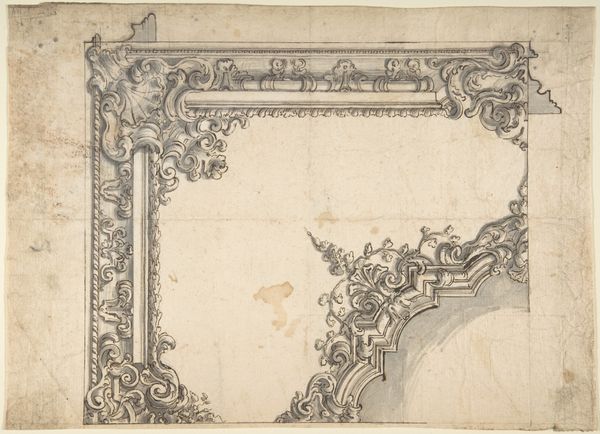
Cartouche due disegno differenti da Baldachino da Processioni 1700 - 1800
0:00
0:00
drawing, ink, pen
#
drawing
#
baroque
#
ink
#
pen work
#
pen
Dimensions: sheet: 6 3/4 x 11 1/2 in. (17.1 x 29.2 cm)
Copyright: Public Domain
Editor: Here we have an ink and pen drawing entitled "Cartouche due disegno differenti da Baldachino da Processioni," dating from between 1700 and 1800, by an anonymous artist. It depicts sketches of what appears to be a canopy, maybe for religious ceremonies. The material looks light and delicate, but the framework implies solid construction. What can you tell me about it? Curator: Looking at this drawing, it's essential to consider the labour and the materiality behind the ornate design. This isn't just about aesthetics, but the social context that enabled the creation of such objects. What kind of workshop produced designs like these? Who were the artisans, and what was their role in the creation of these baldachins? The drawing becomes less about a specific, realized canopy, and more about the infrastructure required to manufacture this level of ornamented processional object. Editor: That’s a fascinating way to think about it! So, it's more about the means of production rather than the final product itself? Curator: Precisely! Think about the availability of materials like specific inks and quality paper. Or the skilled labour required for detailed pen work, accessible only to those with certain means within the societal structure. These details highlight the art's deep roots in consumption and social hierarchies. Even the choice of a pen over, say, a less refined tool, speaks to decisions influenced by materiality and technique available to the artist and workshop. Editor: That perspective really opens up new avenues for interpretation! I hadn't considered the actual making of it as part of its message. Curator: It's about understanding that even design is labour and reflects consumption, challenging that false distinction between high art and the more functional crafts. So, what new meanings have you extracted from that perspective? Editor: It reframes the artwork not just as a beautiful design but also as evidence of Baroque society, its class structure and production processes. Thanks! Curator: Exactly, and that connection to material conditions provides deeper insight. Always consider: what can the material history tell us?
Comments
No comments
Be the first to comment and join the conversation on the ultimate creative platform.
